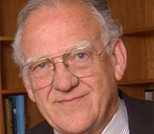Earth Day 50 Years Later

For some time now, pundits have suggested the United States is more divided than ever. Though the matter defies a mustering of empirical proof, I would suggest otherwise. Divided now? Yes. But just 50 years ago, the nation was sharply fractured by three major social forces, and this at a time of an ongoing Cold War with Russia. It was in this environment that something encouraging—Earth Day—was born, an event that inspired millions but which, in an odd and unexpected way, led to a squandering of some of the promise of the burgeoning environmental movement.
Yes, 50 years ago, there were bitter struggles over Vietnam and what would ultimately and sadly mean 58,000 American lives lost in a struggle that seemed to go nowhere. Protesters were in the streets, hippies were challenging the status quo, and marijuana and LSD use were on the rise. Added to this cauldron of chaos, the nation was struggling in an extended effort to implement civil rights legislation and related Supreme Court rulings that were ending segregated schools, universities, and public life.
Yes, progress toward important legislative goals was being made, but the journey was still a fractious one. And added to these two massive forces dividing the nation, a budding environmental movement was about to emerge suddenly into a major national force—one that would inspire pitched battles between industrialized cities, states, and regions and highly concerned environmentalists.
But unlike some American protests and counter protests, America’s first Earth Day—organized by U.S. Senator Gaylord Nelson (D-Wis.)—blossomed forth peacefully on April 22, 1970 with a massive showing of demonstrations that involved 20 million people, more than 10,000 public schools and across some 1,000 communities. Inspired by Senator Nelson but organized by grassroots volunteers as a national teach-in, Earth Day unexpectedly became a watershed event that marked the beginning of a new environmental era.
As is said, there is a time for all things; 1970 was the time to start Earth Day celebrations worldwide. By 1990, 184 countries were celebrating this special day.
The numbers of people involved and the widespread calls for federal action were more than any serious national politician could ignore. At the time, Senator Edmund Muskie (D-Maine)—chairman of the Senate Air and Water Pollution Subcommittee and an aspiring candidate for president also known as “Mr. Clean”—was writing the nation’s first Clean Air Act. Legislation that would form the Environmental Protection Agency was also in the works. Consumer advocate Ralph Nader, famous for his use of university students in pursuing policy reform, was an outsider in the mix for the nation’s highest office, and incumbent President Richard M. Nixon was eager to win another term of office.
Most everyone recognized that Vietnam and civil rights would require lasting attention, but Earth Day forced these very different leaders and presidential aspirants to address additional challenges. In the political struggle that ensued, command-and-control regulation—demonstrably the most costly way to achieve environmental goals, as well as the easiest way to cartelize industry—became the templet that characterizes American environmental law to this day. Command-and-control was typically a top-down, one-suit-fits-all form of regulation that relied on engineering standards that, more often than not, imposed stricter requirements on new plants and businesses than existing ones. Attracted by the certainty implied by this form of regulation, environmental leaders lent their enthusiastic support. Operators of existing polluting firms preferred command-and-control, too. They hoped to see regulation raise rivals’ cost.
In Senator Muskie’s committee work leading up to Earth Day, staff and senate leadership sensibly concluded that setting performance standards—essentially pollution reduction goals that would have to be achieved—would be the regulatory approach taken in the new national air and water quality legislation. Setting goals and imposing stiff fines and punishment for failure to perform would leave it up to individual polluters, firms, and industries to determine just how they would go about meeting the goals.
Creativity would pay off, good-old American competition would drive the various actors to discover lower-cost ways to meet fixed goals, and the federal government would become the impartial guardian of the environment, not an engineering design-and-approval enterprise.
Muskie’s committee had moved to performance standards after considering command-and-control engineering standards that would have to be met uniformly across each and every major source within the nation’s polluters. They had also considered the use of emission fees and taxes. Although making polluters pay to use the environment had worked for decades in Germany and France with astounding environmental successes, opposition sensitive to the notion that anyone could pay to pollute eliminated consideration of that approach.
Performance standards would have been the American approach, most likely, had it not been for the combination of Earth Day and presidential politics. At an Earth Day celebration in Philadelphia, Ralph Nader challenged Senator Muskie, accusing him of being soft on polluters because of his concern for reducing the costliness of the pending national program. After all, Nader reasoned, the polluters were the evil ones. Make them pay. Unable, perhaps, to get across the point that what’s costly for polluters ultimately costs just about all of us, Muskie’s position on the matter pivoted. His committee revised its position. Command-and-control ruled the day.
But this is not the end of the story. Mr. Nixon and his advisors were watching all this as they laid plans for the Nixon reelection campaign. Amazed at the Earth Day turnout, the Nixon team huddled with the president and decided that President Nixon would become the Environment President. He would provide the appropriate Earth Day response by creating the U.S. Environmental Protection Agency and by pushing for more command-and-control regulation. And he did.
Earth Day 50 years ago inspired forces that forever changed the world’s treatment of environmental assets. Across the half-century since then, significant regulatory changes have occurred, but with few noteworthy exceptions, the command-and-control templet still dominates America’s regulatory approach. Yet while environmental quality has been enhanced markedly, the presence of command-and-control has made the environmental journey slower and more costly than it might have been otherwise.
In spite of this, Earth Day demonstrated what can happen when, in a free society, a nation’s attention becomes focused on newly recognized scarcities that must somehow be dealt with.











